
M1 Tank Platoon is a tactical simulator of tank warfare developed and published by MicroProse for the Amiga, Atari ST and MS-DOS in 1989. The game features a mixture of first-person, third-person tank warfare, and tactical simulation gameplay. It was followed by a sequel, M1 Tank Platoon II, released by MicroProse in 1998 for Windows. M1 Tank Platoon was sold to Interplay Entertainment in 2009. M1 Tank Platoon is available on Steam and Epic Games services.

Bandit Kings of Ancient China, also known as Suikoden: Tenmei no Chikai in Japan, is a turn-based strategy video game developed and published by Koei, and released in 1989 for MSX, MS-DOS, Amiga, and Macintosh and in 1990 for the Nintendo Entertainment System. In 1996, Koei issued a remake for the Japanese Sega Saturn and PlayStation featuring vastly improved graphics and new arrangements of the original songs.

Wings is a World War I video game developed and published by Cinemaware. It was released for the Amiga in 1990. The action sequences are similar in style to those of the 1927 silent film Wings.

Centurion: Defender of Rome is a turn-based strategy video game with real-time battle sequences, designed by Kellyn Beck and Bits of Magic and published by Electronic Arts. Originally released for MS-DOS in 1990, the game was later ported to the Amiga and the Sega Genesis in 1991. Centurion shares much of the concept and feel with Beck's earlier game Defender of the Crown (1987).
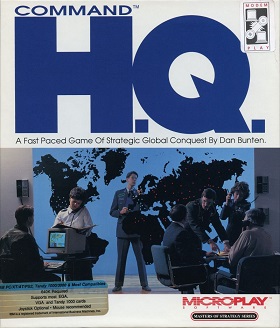
Command HQ is a real-time strategy world domination game. It was released in 1990 by Microplay Software and was created by designer Danielle Bunten.

Wolfpack is a World War II submarine simulator published by Broderbund in the 1990s, for Amiga, Atari ST, DOS, and Macintosh. It simulates combat actions between wolf packs of German U-boats and convoys of Allied destroyers and merchant vessels in the Battle of the Atlantic.
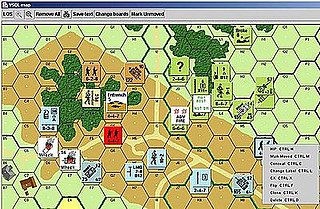
A computer wargame is a wargame played on a digital device. Descended from board wargaming, it simulates military conflict at the tactical, operational or strategic level. Computer wargames are both sold commercially for recreational use and, in some cases, used for military purposes.

Their Finest Hour: The Battle of Britain is a World War II combat flight simulation game by Lawrence Holland, released in October 1989 for the Amiga, Atari ST and MS-DOS systems. It was the second game in the trilogy of World War II titles by Lucasfilm Games, the others being Battlehawks 1942 (1988) and Secret Weapons of the Luftwaffe (1991). The game was released with a 192-page manual written by Victor Cross, that provided a detailed historical overview of the battle and pilots' perspectives. An expansion pack, Their Finest Missions: Volume One, was released in 1989.
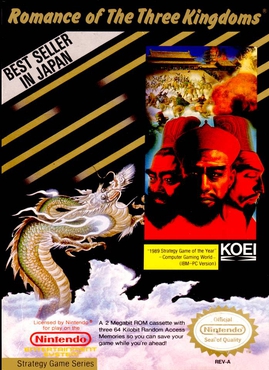
Romance of the Three Kingdoms, known as Sangokushi in Japan, is a 1985 video game published by Koei. It is the first game in the Romance of the Three Kingdoms series. Originally released on the PC-88, it was ported to numerous platforms, including the PC-98, MSX, Nintendo Entertainment System (1988), Amiga, MS-DOS, FM-7, Sharp X1, Sharp X68000, WonderSwan, Windows (2003) and mobile phones.

Halls of Montezuma: A Battle History of the U.S. Marine Corps is a strategy video game developed by Strategic Studies Group in 1987 for the Apple II. Ports were later released for the Commodore 64, Amiga, DOS, and Apple IIGS.
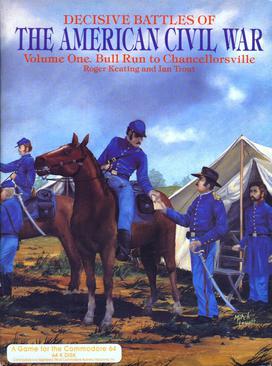
Decisive Battles of the American Civil War Volume 1: Bull Run to Chancellorsville is a computer wargame developed by Roger Keating and Ian Trout and published by Strategic Studies Group in 1988 for the Commodore 64 and Apple II. Two sequels were released in 1988: Volume 2: Gaines Mill to Chattanooga and Volume 3: Wilderness to Nashville.
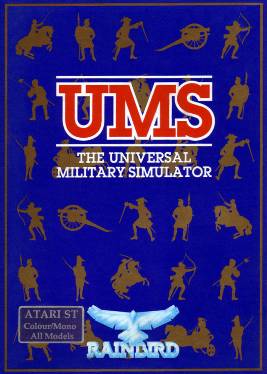
The Universal Military Simulator is a computer game developed by Rainbird Software in 1987 for the Macintosh, Tandy 4000, and IBM PC compatibles. In 1988, both Atari ST, Amiga versions were released. The game was created by Ezra Sidran. The PC and Amiga versions were ported by Ed Isenberg. The game spawned two sequels: UMS II: Nations at War and The War College: Universal Military Simulator 3.

Harpoon is a computer wargame published by Three-Sixty Pacific in 1989 for DOS. This was the first game in the Harpoon series. It was ported to the Amiga and Macintosh.
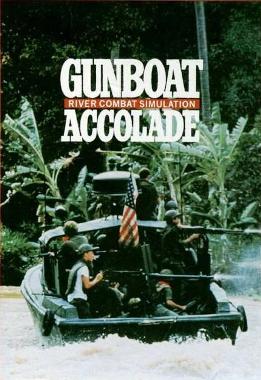
Gunboat is a simulation video game developed and released by Accolade in 1990 for MS-DOS. Ports were released for the Amstrad CPC, ZX Spectrum, Amiga and TurboGrafx-16. It is a combat simulator of a Patrol Boat, River (PBR).
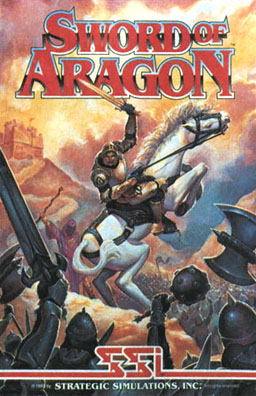
Sword of Aragon is a turn-based strategy and role-playing game developed and published by Strategic Simulations in 1989. It is also considered to be of the 4X genre. Set in the fictional land of Aragon, the games casts its protagonist as the duke of a city named Aladda. After assuming rule over the city and avenging his father's death, the protagonist embarks on a quest to unify the land through conquest. Accomplishing this goal entails developing cities, recruiting armies, and directing the troops on the fields of battle to victory. First published for MS-DOS, the game was ported to Amiga machines. Reception towards Sword of Aragon tended to be more positive than negative; reviewers called it an exciting game, but criticized its method of copy protection and cited problems with its documentation. There were also opinions that the game was more of a niche product, catering to hardcore strategists.
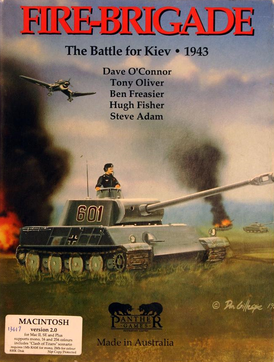
Fire-Brigade: The Battle for Kiev - 1943 is a computer wargame developed and published by Panther Games in Australia in 1988. The game is set around the historical WWII Eastern Front Battle of Kiev in 1943.

Austerlitz is a turn-based strategy video game developed by Personal Software Services and published by Mirrorsoft. It was released in the United Kingdom and Germany for the Amiga, Atari ST and MS-DOS home computers in 1989. It was also re-released in France for Amiga home computers by Mirror Image in 1991. The game is set during the Battle of Austerlitz of the Napoleonic Wars and revolves around Napoleon's forces defending the Austrian village of Austerlitz from the invading army of Alexander I of Russia.

Kampfgruppe is a 1985 computer wargame designed by Gary Grigsby and published by Strategic Simulations for the Apple II, Atari 8-bit family, and Commodore 64. Kampfgruppe is a game tactical-scale combat on the Eastern Front. An MS-DOS port was released in 1987 followed by an Amiga version in 1988.

Typhoon of Steel is a 1988 computer wargame designed by Gary Grigsby and published by Strategic Simulations Inc. (SSI) for the Apple II, Commodore 64, Amiga, and IBM PC. A follow-up to Grigsby's 1987 game Panzer Strike, it simulates military conflict during World War II.

Stellar Crusade is a 4X strategy video game released in 1988 by Strategic Simulations. Players control one or both of two spacefaring empires at war with each other, depending on whether it is played in a single-player campaign or multiplayer.




















